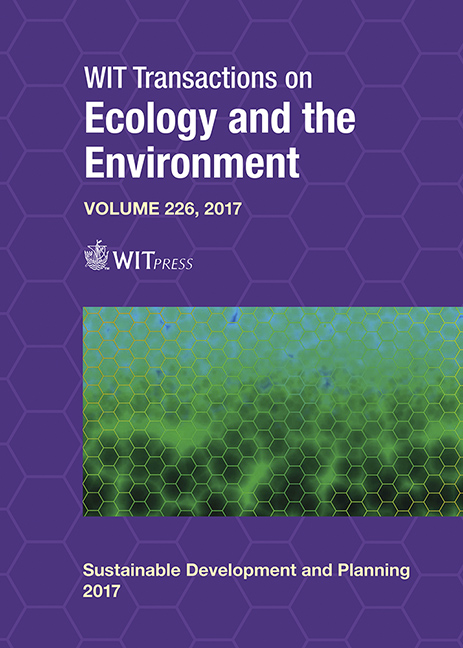OPERATIONAL ENERGY/CARBON DIOXIDE EMISSIONS ANALYSIS COMBING BUILDING CLUSTER AND TRANSPORT DEMAND OF BUILDINGS’ USERS AT THE STREET LEVEL: A CASE STUDY OF HANKOU RAILWAY STATION SURROUNDINGS IN CHINA
Price
Free (open access)
Transaction
Volume
226
Pages
11
Page Range
107 - 117
Published
2017
Size
632 kb
Paper DOI
10.2495/SDP170101
Copyright
WIT Press
Author(s)
QUNFENG JI, PHIL JONES
Abstract
Rapidly growing energy consumption and associated carbon emissions from building clusters and transport activities have raised concerns. Predicting carbon emissions combing building clusters and transport activities due to buildings’ users is an effective way to getting a better understanding of their energy use and carbon emissions, and thus to control carbon emissions for low carbon development. The purpose of this paper is to quantify and compare operational energy consumption and associated carbon dioxide emissions from building cluster and transport activities due to the buildings’ occupants. The energy consumption and carbon emission features on building cluster and transport activities are then presented and analysed. Finally, relevant low-carbon development strategies in the built environment from building cluster and transport activities are outlined and discussed. The results of the case study have shown that: (1) Energy consumption and carbon emissions from building clusters are almost four times higher than transport carbon emissions due to buildings’ users in the unit of the square metre per year. Therefore, more focus on energy-saving should be emphasised on the buildings sector compared to the transport sector. (2) Different building types significantly varied in energy demands. Specifically, residential buildings have the highest heating demands, while public buildings in term of commercial, office and hotel buildings consumed more energy on cooling demands. (3) Transport-related carbon emissions due to mobility from buildings’ users by car and taxi are the primary sources of carbon emissions. The highest average carbon emissions come from private cars/ taxis. By contrast, public transport has the lowest average transport carbon emissions due to their per capita low carbon emission factor. Transit modes are the preferred low carbon travel modes, so these should be promoted.
Keywords
building cluster, transport activities, energy consumption, carbon emissions, street-level





